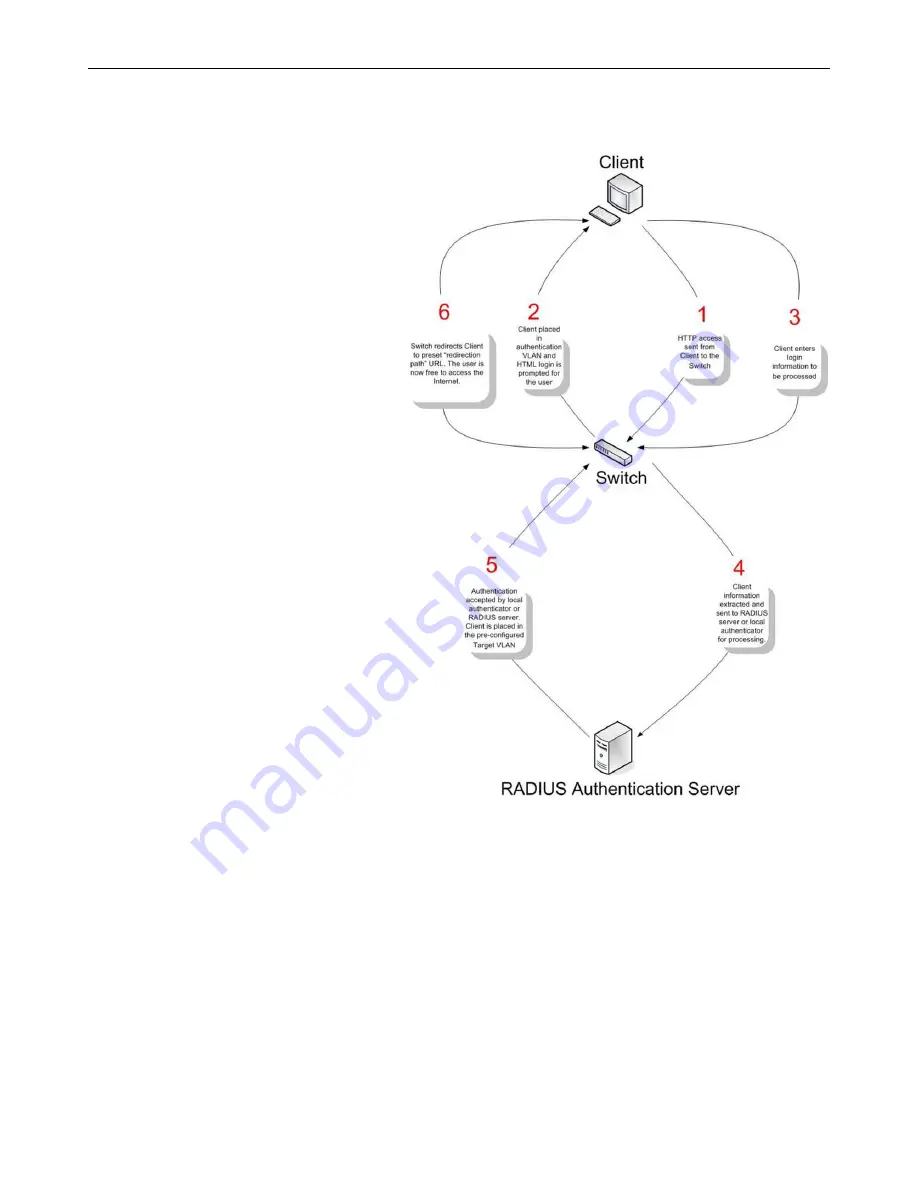
xStack
®
DGS-3400 Series Layer 2 Gigabit Ethernet Managed Sw itch
302
Web-based Access Control (WAC)
Conditions and Limitations
1.
The subnet of the authentication VLAN’s IP interface must be the same as that of the client. If not configured properly,
the authentication will be permanently denied by the authenticator. It cannot be a Guest VLAN.
2.
If the client is utilizing DHCP to attain an IP address, the authentication VLAN must provide a DHCP server or a DHCP
relay function so that client may obtain an IP address.
3.
The authentication VLAN of this function must be configured to access a DNS server to improve CPU performance, and
allow the processing of DNS, UDP and HTTP packets.
4.
Certain functions exist on the Switch that will filter HTTP packets, such as the Access Profile function. The user needs to
be very careful when setting filter functions for the target VLAN, so that these HTTP packets are not denied by the
Switch.
5.
The Redirection Path must be set before the Web-based Access Control can be enabled. If not, the user will be prompted
with an error message and the Web-based Access Control will not be enabled.
6.
If a RADIUS server is to be used for authentication, the user must first establish a RADIUS Server with the appropriate
parameters, including the target VLAN, before enabling the Web-based Access Control on the Switch.
Web-Based Authentication Login is a feature
designed to authenticate a user when the user is
trying to access the Internet via the Switch.
The authentication process uses HTTP protocol.
The switch enters the authenticating stage when
users would like to browse web screen (Ex:
http://www.dlink.com) through the web browser
(Ex: IE). When the switch detects HTTP packets,
and this port or host (host-based mode) is un-
authenticated, the Switch will pop out
username/password screen to query users. The user
cannot access the Internet until passing the
authentication process.
The Switch can be the authentication server itself,
and perform the authentication based on a local
database. The Switch also can be a RADIUS client
and perform the authentication process via
RADIUS protocol with a remote RADIUS server.
The client user initiates the authentication process
of WAC via a Web access.






























